Household silver
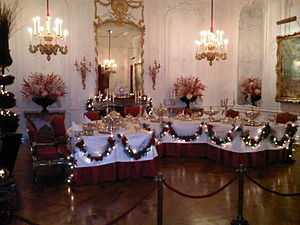
Household silver or silverware (the silver, the plate) includes tableware, cutlery and other household items made of sterling silver, Britannia silver or Sheffield plate silver. Silver is sometimes bought in sets or combined to form sets, such as a set of silver candlesticks or a silver tea set.
Silver requires a good deal of care, as it tarnishes and must be hand polished, since careless or machine polishing ruins the patina and can completely erode the silver layer in Sheffield plate.
In a great house, the footmen cleaned and polished the silver, overseen by the butler who was responsible for it. In middle-income households the few items of silver or silverplate may be displayed on a buffet or in a cabinet or china cabinet or breakfront, but a larger collection of silver is usually locked away in a secure room or a special silver safe.
A silverman or silver butler has expertise and professional knowledge of the management, secure storage, use and cleaning of all silverware, associated tableware and other paraphernalia for use at military and otherons. This expertise covers the maintenance, cleaning,proper use and presentation of these assets to create aesthetically correct layouts for effective ambience at such splendid occasions. The role of silverman tends now to be restricted to some private houses and large organizations, in particular the military.
-

-
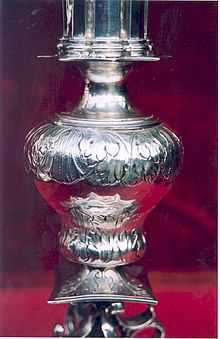
-

Mark of Robert Cooper
-

De Lamerie
-

Pair of salts, salver and cream jug bearing arms of family of Beachcroft. (Arms granted 12 Nov. 1717: Bendy of siz argent and gules three stags heads cabossed or. Crest: A beech tree proper behind six park pales argent.)
-

Seven salvers (c. 1735–1750). (Arms of Bisse (granted Ireland 25 May 1637): Sable three escalops in pale argent a canton ermine and a crescent for difference or. Crest: On a mount vert two snakes or, interlaced respecting each other.)
-
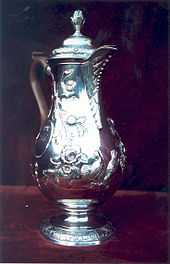
A c. 1770 hot-water jug, Dublin
-

Paul Storr
-

GS & WF canteen laid out
-
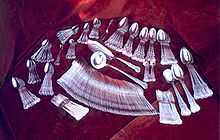
Coburg pattern canteen
-
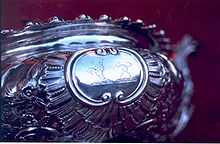
Detail of a teapot
-

Detail of GS & WF forks. George Smith III and William Fearn